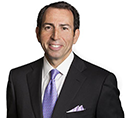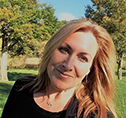Welcome to The Expert Roundup Volume 3: a newsletter intended to help lawyers work more effectively with expert witnesses. We kick off this volume with an interview with Douglas M. Monasebian, MD, renowned plastic surgeon and Connie Standhart, MS, CRC, Vocational Rehabilitation Consultant. We then move on to the concept of ‘hot tubbing’ where lawyers rely on experts to make their case in front of a judge. Finally, we share strategies for working at home and provide lifestyle tips to stay healthy.
During the second quarter of 2020 JumpStart SME identified, qualified, and retained many new experts — all of which are profiled and housed within our database. We are also in the process of gathering feedback on each of experts through a formal attorney survey.
Expert Spotlights

Douglas M. Monasebian, MD, DMD, FACS, Diplomate,
American Board of Plastic Surgery Assistant Professor, Mount Sinai School of Medicine
Even during the height of NYC’s coronavirus crisis, Dr. Douglas M. Monasebian maintained office hours to take of care of emergency situations. He shared, “These past several months have been trying times for all of us, but children and adults still injure themselves.” His commitment to his patients never waned, “It is our utmost priority to take care of our patients, so we were here every day.”
Dr. Monasebian is a well-regarded plastic surgeon in New York City who treats patients from all over the world. In addition to his busy practice, for the past 25 years, he has opined on hundreds of legal cases both for the plaintiff and defense.
JumpStart SME caught up with Dr. Monasebian last week to learn more about his experience as an expert witness. Specifically, we wanted to learn more about how he works with attorneys and the types of cases on which he has consulted.
JumpStart: How can you help a lawyer evaluate an injury?
Monasebian: Basically, I can be a medical detective, helping the lawyer solve a problem, such as the causes of an injury, prognosis and other cerebral aspects. Plastic surgeons often have to piece back an injury and recreate what occurred. We can help make sense of the case as well as determine cause and liability.
JumpStart: Can you share some of recent cases where your expertise really helped to solidify the legal defense?
Monasebian: I have been involved in very interesting malpractice cases, including:
- The plaintiff alleged that her breast implants ruptured due to chiropractic manipulation. After my examination and a dive into the literature we were able to demonstrate that the implants were nearly 30 years old and had ruptured silently over time.
- The plaintiff, about 23 years of age, alleged that her breast cancer was not diagnosed prior to breast augmentation. We were able to demonstrate that the plastic surgeon met and exceeded the standard of care. There was no way to diagnose her breast cancer prior to the procedure.
- The plaintiff alleged that the poor outcomes of a mandible reconstruction were due to surgeon malpractice, when in fact the records proved that the plaintiff did not comply with post-surgical instructions and was lost to follow up.
JumpStart: It is our understanding that scar evaluation is often a critical aspect of a legal defense. Can you share more on scar permanence and the relevance of a scar?
Monasebian: It is important for lawyers to understand that every patient is different. Variables like age or overall health will impact how the scar heals and the long-term impact. Burns scars are notoriously bad. Burns permeate the surface which leads to more injury, complication, and loss of function. Surgical scars arise from planned incisions, and therefore are not as severe. Injuries to the hand and face are especially prone to functional abnormalities and disabilities.
JumpStart: How do you evaluate a scar?
Monasebian: I measure and feel the scar, evaluating any functional compromise (e.g., sensory deficits or range of motion), and use sophisticated sensory testing if needed. Many factors determine the healing process and ultimate appearance of scars. The location, depth, size, and mechanism of injury all play a role. A scar will continue to mature and improve for up to a year. After that, scar management might require surgery, laser treatment, steroid injections or local wound care including silicone sheeting and massage.
JumpStart: What advice do you have for lawyers?
Monasebian: Lawyers should have a strong handle on the medical issues in order to ask better questions, form accurate case theories, and ultimately be more effective in court. Collaborating with experts will ultimately produce better client outcomes.
Connie Standhart, MS
Vocational Rehabilitation Consultant, Peak Solutions Vocational Services, LLC
Connie Standhart, MS, CRC, has worked as a Vocational Rehabilitation Counselor for over 25 years, and founded Peak Solutions Vocational Services, LLC, in 1997. She holds a masters’ in Human Services Counseling and is a nationally Certified Rehabilitation Counselor. She provides case management and career counseling services such as vocational assessments, vocational counseling, transferable skills analyses, job-seeking skills training, resume development, job placement assistance, and vocational rehabilitation planning to individuals with physical and mental challenges.
Over the past seven years, she has worked as a vocational consultant to both plaintiff and defense firms, offering expert vocational services to determine individuals’ employability, job placement potential and wage-earning capacity. She provides testimony when warranted. Connie prides herself on seeing both macro and micro issues within each case. Her consultation background has included cases in Long-Term Disability, Short-Term Disability, No-Fault Auto, Disability Waiver, Workers’ Compensation, Civil Litigation, and Marital Dissolution cases. She enjoys working on some of the thornier cases as she is a real strategist.
JumpStart SME: What advice can you offer lawyers?
Standhart: Prepare your expert to ensure that they have all the materials, information and records they need to make an accurate assessment. Sounds simple, but you would be surprised how often this step is neglected. I always recommend the following:
- Provide all relevant information required for a thorough evaluation. This includes medical, legal and financial documents
- Give the expert adequate time to review the records and conduct an evaluation.
- Keep your expert apprised of discovery dates, trial dates, etc.
Connie has endless energy. In addition to her legal work, she provides pro-bono counseling for the college-bound and economically-disadvantaged students.
Special Feature
 Hot Tubbing: Are you ready to jump in with this new expert witness technique?
Hot Tubbing: Are you ready to jump in with this new expert witness technique?
Hot tubbing, or concurrent evidence, is an alternative procedure to elicit expert testimony. Experts from both parties convene with the judge and discuss the case together under oath in an attempt to reach an agreement. This method is popular in Australia, Brazil, South Africa, and Italy. Hot tubbing, typically used in non-jury cases, is endorsed by a number of US jurisdictions and recognized in court rules and practice notes.
According to attorney Peter Tamigi, “It is not usual in child sex abuse cases for the judge to appoint an expert agreed to by the parties or selected by the Court to render a report which helps the Court make certain decisions about what evidence is admissible and even if the child’s story is accurate or is a fabrication.”
How to make a splash
Prior to trial, experts on both sides work together to submit a joint outline with their agreements and disagreements. At trial, the expert witness presents an opening statement and then engages both the judge and other side in a technical conversation. All parties are expected and encouraged to discuss and question each other freely.
Before you jump in, we talked to several attorneys in the NY area to hear what they have to say about hot tubbing.
Potential Benefits
- Streamlined litigation process, which is more cost effective
- Relevant to a highly technical case, like patent infringement, complex medical malpractice, class action, or complicated construction cases
- May be beneficial when experts are opining on an objective topic, like building codes
Potential Concerns
- Loss of control for the attorneys
- Experts presenting opinions with a vigorous cross-examination could overlook key flaw in either sides’ case
- Attorneys aim to shape expert opinions based on their needs, and collaboration among experts may impede that process
- While total litigation costs may be lessened, experts’ costs will increase and experts are often much more expensive than attorneys
- Expert opinions are exchanged in discovery and we usually know what issues experts agree or disagree on based on the expert reports
- Experts are not lawyers, so while they may be very adept at providing technical information, asking them to do more (like an opening statement and present a viewpoint) may not work very well
- Lawyers are advocates, whereas experts tend to look at things from a science-based approach and cannot effectively advocate a client’s position
- It would create impeachable testimony
- Control of the witness is out of the attorneys’ hands, making preparation of the witnesses essential
With COVID-19 impacting the practice of law and slowing the courts, hot-tubbing may serve as an alternative in the right circumstances. Experts that JumpStart SME recommends are all highly qualified and comfortable presenting before a judge or testifying.
Advice

Is Working at Home, Working for You?
Adopted from Brian Davis, 12 Biggest Challenges of Working from Home – How to Overcome Them. Money Crashers, March 25, 2020.
Law firms have taken steps to ensure you do not miss a beat while working from home. From cloud-based systems allowing teams to work remotely and access files to video conferencing for face-to-face meetings. But now that you are in the thick of things, how is it really going for you?
Here are 6 challenges people commonly report when working from home and suggestions that may help you climb out of the work at home blues.
- Not enough work. Before throwing your hands up, check in with your colleagues and supervisor asking for more to do.
- Action: Reach out to you clients to say hello, review a current case, or forward information that addresses their business needs. They might send you a new case.
- Action: Explore getting involved in other aspects of your firm’s operations; show initiative by working on business development, diversity initiatives, or technical solutions
- Out of Sync with the Work World. Sounds great to work when you feel like it, but many of us need more structure.
- Action: Stick to standard timeframes to wake up, conduct business, and shut down. As a result, you will have control over your day to ensure you do not work too little or too much, and have time for your non-work interests
- Distractions. Staying productive during your working hours can challenge even the most focused of individuals. When you are surrounded by personal objects, adorable children, chores, television, and the refrigerator, it is nearly impossible to concentrate.
- Action: Try to physically remove yourself from the home’s epicenter and set-up shop in a quiet area with nothing to tempt you. Try noise-canceling headphones and tell your family that you cannot be disturbed during your working hours – no different from when you are at the office.
- Missing your supervisor. Most of us need some help with work load supervision, prioritization and feedback.
- Action: Stay in close contact with your boss and ask them what your priorities should be.
- Action: Establish standard weekly check in calls where you can go over key issues and seek guidance. Carry the scheduling ball as many supervisors get busy and may forget their obligation to you.
- Not knowing where to focus. It is hard to meet priorities, when you don’t know what the priorities are.
- Action: Schedule weekly or daily phone or videoconference meetings with your most important teams. Check each team member’s progress toward their agreed-upon deliverables and goals. Use tools for daily communication to keep an ongoing stream of communication.
- Missing your peeps. All the technology in the world cannot replace human interaction. And being by yourself all day without colleagues to challenge, chat with, and joke around with can leave you feeling a bit lonely and unmotivated. It helps to recognize this reality and plan for ways to connect.
 Ready to Lose the COVID 19?
Ready to Lose the COVID 19?
Did you gain the Covid 19 while you were sheltering at home? If so, you were not alone! We asked our expert Daryl Moss, Certified Holistic Health Coach to share some of her top 10 tips for getting back into shape.
Top 10 Tips
- Add in lots of fresh, locally grown fruits and vegetables into your diet; look for a variety colored fruits and veggies each day. These are nutrient powerhouses and will fortify your immune system.
- Think of the vegetables as your entrée and the meat as the side dish.
- Eat only whole grains, nothing refined, and limit the portion sizes.
- Do your best to eat solid meals and not graze all day. Your digestion will be better, and you will burn more fat.
- Limit your alcohol intake.
- Finish dinner at least three hours before going to bed. This also boosts digestion and will help you sleep better.
- Speaking of sleep, the goal is 8 hours per night. Chronically sleep deprived people tend to gain weight and have weaker immune systems.
- Make sure to stay hydrated. Often, when we feel hunger between meals, we actually are thirsty. Start your day with a tall glass of lemon water.
- Get outside and exercise. Movement every day is important. You do not have to take a class at the gym. Walking counts. Being outside in the fresh air is so important to our physical and emotional well-being, and while you are outdoors, you can absorb some Vitamin D from the sun (another immune booster).
- Incorporate a deep breathing or meditation practice into your life. Managing stress is vital to overall health. If our stress levels are constantly high, it will be almost impossible to lose weight.
Daryl Moss is a Certified Holistic Health Coach, trained in functional medicine. She is the owner of Mission to Wellness, a health coaching practice, and co-creator of The Synergy3 Wellness Programs. She can be reached at daryl@missiontowellness.com.
Meet JumpStart SME
JumpStart SME builds a case on the right expert by connecting clients to the foremost specialists in all fields, including academics, industry specialists, business leaders, scientists, and medical professionals. With the insights and expertise of the right expert, our clients can make informed decisions — ensuring effectiveness when answering a complaint or arguing in court. We closely partner with you to understand the particulars of a case and your specific needs to ensure that the expert has been just as carefully considered as the other elements needed for a winning strategy.
